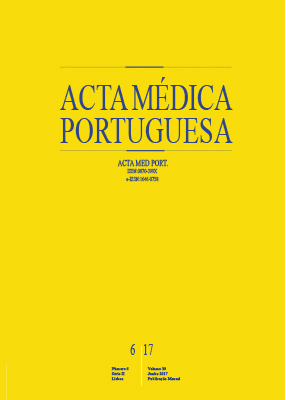Functional, Sensorial, Mobility and Communication Difficulties in the Portuguese Oldest Old (80+)
DOI:
https://doi.org/10.20344/amp.8060Keywords:
Activities of Daily Living, Aged, 80 and over, Censuses, Demography, Disability Evaluation, Frail Elderly, PortugalAbstract
Introduction: The ageing of populations is evident in most developed countries, and the oldest old group is one of the segments with the fastest growing. The aim of this paper is to examine sociodemographic and health related characteristics of the portuguese oldest old, using a census-based approach.
Material and Methods: A descriptive study considering all residents aged 80 years and older at the time of the 2011 Census (n = 532 219) was conducted. Information on sociodemographic characteristics, sensory functions (seeing, hearing), functional status (walking/climbing stairs, bathing/dressing alone), cognition (memory/concentration), and communication (understanding others/being understood) as assessed by the Portuguese census official questionnaires were analyzed.
Results: Findings revealed that most of the oldest old are women (64.5%), widowed (53.9%), illiterate (46.1%) and live in private households (88.8%). Walking/climbing stairs (57.1%), vision (39.1%) and hearing (35.1%) were the dimensions where the oldest old presented major constrains. In parallel, understanding others/being understood (25.9%) and memory/concentration (34.4%) were the dimensions with lower percentages of difficulties. Significant differences were found between octogenarians/nonagenarians and centenarians for vision, walk/climb stairs, and bathing/dressing alone, with centenarians presenting a higher percentage of difficulties.
Discussion: Portuguese oldest old showed significant difficulties in activities of daily living, nevertheless cognitive and communication capacities seem to be commonly maintained. Taken together, these findings suggest the need for functional assistance, which can be ultimately managed by the older person him/herself.
Conclusion: Based on the observed differences between centenarians and younger oldest old, specific interventions should be equated to better respond to their potentially distinctive needs.
Downloads
Downloads
Published
How to Cite
Issue
Section
License
All the articles published in the AMP are open access and comply with the requirements of funding agencies or academic institutions. The AMP is governed by the terms of the Creative Commons ‘Attribution – Non-Commercial Use - (CC-BY-NC)’ license, regarding the use by third parties.
It is the author’s responsibility to obtain approval for the reproduction of figures, tables, etc. from other publications.
Upon acceptance of an article for publication, the authors will be asked to complete the ICMJE “Copyright Liability and Copyright Sharing Statement “(http://www.actamedicaportuguesa.com/info/AMP-NormasPublicacao.pdf) and the “Declaration of Potential Conflicts of Interest” (http:// www.icmje.org/conflicts-of-interest). An e-mail will be sent to the corresponding author to acknowledge receipt of the manuscript.
After publication, the authors are authorised to make their articles available in repositories of their institutions of origin, as long as they always mention where they were published and according to the Creative Commons license.









